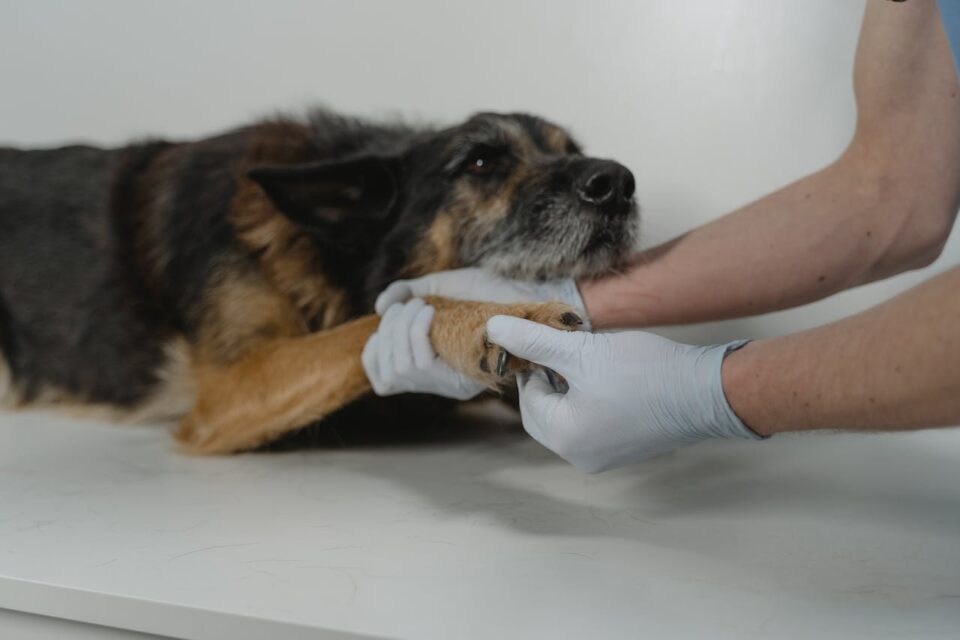How to Keep a Dog from Licking Wound: Preventive Measures
You’ve just returned from the vet with your dog, sporting a fresh bandage over a wound. As a responsible pet owner, your next challenge is ensuring that your dog doesn’t lick or chew at the wound, which is a natural instinct for them. Licking can lead to infection, delay healing, and possibly worsen the wound.
Understanding how to prevent your dog from interfering with their wound is crucial. It’s not just about stopping the immediate licking behavior but also about implementing effective strategies to keep the wound safe throughout the healing process. There are various methods to consider, from using protective gear to employing behavioral techniques.
In this guide, you’ll learn about different preventive measures to keep your dog from licking their wound. This knowledge is critical to ensuring your dog’s quick and safe recovery. Keep reading to discover how to protect your dog’s wound and promote healing effectively.
Recognizing When Bandaging is Necessary
It’s important to recognize when a wound on your dog requires bandaging. Assessing the severity of the injury is the first step, followed by determining if professional veterinary care is needed. Look out for signs of infection or serious complications and understand the immediate actions required before applying a bandage.
Related: How to Treat an Open Wound on a Dog: First Aid Tips
Assembling Your Canine First Aid Kit

Having a well-stocked first aid kit is essential for any dog owner. This kit should include various types of bandages and their specific uses, antiseptics, disinfectants, and additional tools like scissors, tweezers, and gloves. Regularly updating and maintaining accessibility to your first aid kit is vital for prompt and efficient wound care.
Cleaning and Preparing the Wound
Before bandaging, cleaning the wound is crucial. Use safe and effective techniques and appropriate cleaning solutions to avoid further injury. Make sure that the wound area is dried carefully after cleaning. Always take necessary precautions to ensure the wound is properly prepared for bandaging to prevent infection and other complications.
Applying Antiseptic
Selecting the right antiseptic for your dog’s wound is critical. Apply it correctly and take measures to prevent your dog from licking the wound, which can hinder the healing process and lead to infection. Continuously monitor for any allergic reactions to the antiseptic and maintain cleanliness in the wound area.
Related: Critical Signs of Stress in Dogs: A Comprehensive Guide
Bandaging the Wound
Proper bandaging is crucial in preventing a dog from licking its wound. Begin bandaging carefully, ensuring you select the correct type of bandage for the specific injury. Techniques to securely apply the wound dressing are essential, as is making sure it’s snug but not too tight to cause discomfort.
The bandage should allow for some movement without slipping off. Regularly check for signs that the bandage needs adjustment, such as slipping or tightness.
If your dog has an injury that is causing pain, bandaging them may be difficult. Make sure to use Gou Gou Pet’s Calming Pet Spray to make the process much more comfortable for you and your dog!
Monitoring and Changing the Bandage
The frequency of bandage changes is vital to wound healing. Regularly monitor the wound for signs of healing or any worsening conditions. It’s important to keep the bandage clean and dry at all times.
Observe your dog for any signs of discomfort or restriction caused by the bandage, and consult a veterinarian if you notice any adverse changes or if follow-up care is needed.
Related: How to Be Prepared for a Pet Emergency Before it Happens
Preventing the Dog from Interfering with the Bandage
Consider using a protective collar or protective clothing to prevent your dog from tampering with the bandage. Employ various strategies to distract your dog and keep them engaged.
Supervision is crucial to ensure they don’t interfere with the wound. If you notice any behavioral changes or if your dog is intolerant of collars, explore alternatives that can provide similar protection.
Complications and When to Seek Veterinary Help
Be vigilant for signs of infection or improper healing, which are indications to seek veterinary help immediately. Timely veterinarian intervention can be necessary, as it can prevent potential complications. If required, prepare for an emergency veterinary visit and maintain open communication with your veterinarian throughout your dog’s recovery process.
Are you looking for a way to calm your fur babies down and make them more comfortable so you can bandage them properly? Use Calming Herbal Essential Oil Blend before you start!
Prioritizing Your Dog’s Health and Recovery
Using proper bandaging techniques is essential when it comes to promoting fast healing by preventing your dog from licking their wounds. Correct bandaging not only protects the wound from external contaminants but also helps in faster healing by preventing your dog from interfering with the injury.
As a pet owner, your role in the monitoring and care of your dog during their recovery is vital. Regular checks on the wound and the bandage, understanding when to seek veterinary help, and ensuring that your dog is comfortable and restricted from aggravating the wound are all crucial steps.
Ongoing education in pet first aid is also invaluable. It equips you with the knowledge and skills needed to effectively manage minor injuries and understand when professional help is required. This proactive approach to learning can significantly enhance the well-being and recovery of your beloved pet.
For additional resources and guidance on dog care and first aid, visit Gou Gou Pets. They offer a comprehensive range of information and support to help you ensure the best care for your dog in various health situations. Remember, prioritizing your dog’s health and recovery is a fundamental aspect of responsible pet ownership.
~Veterinarian Recommended